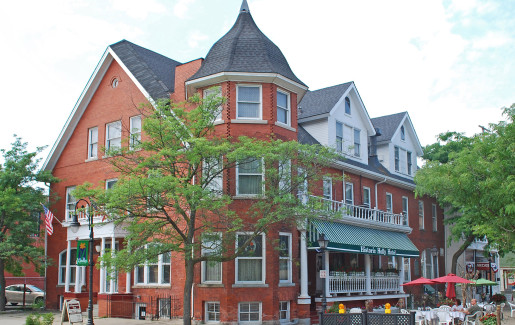Historical Elegance Restored: Holly Hotel Case Study
The Holly Hotel, an architectural jewel in Holly, Michigan dating back to 1891, suffered severe fire damage in 2022, jeopardizing its rich historical legacy and status as a beloved community landmark. This calamity not only threatened the structural integrity of the building but also posed a significant disruption to its ongoing operations as a cherished local restaurant and social hub.
Description
The Holly Hotel, an architectural jewel in Holly, Michigan dating back to 1891, suffered severe fire damage in 2022, jeopardizing its rich historical legacy and status as a beloved community landmark. This calamity not only threatened the structural integrity of the building but also posed a significant disruption to its ongoing operations as a cherished local restaurant and social hub.
The urgency to act swiftly was paramount, as delays heightened the risk of mold growth, potentially causing further deterioration to the building and its valuable contents. This time-sensitive issue was compounded by the insurance company’s initial reluctance to respond, emphasizing the need for immediate and effective action to preserve the hotel’s integrity and prevent the claim from escalating.
Issues
1. Time Sensitivity and Risk of Mold Damage:
The fire’s occurrence during the summer significantly increased the risk of mold damage, a consequence of the extensive water used to extinguish the blaze. The urgency to act swiftly was paramount, as delays heightened the risk of mold growth, potentially causing further deterioration to the building and its valuable contents. This time-sensitive issue was compounded by the insurance company’s initial reluctance to respond, emphasizing the need for immediate and effective action to preserve the hotel’s integrity and prevent the claim from escalating.
2. Historical Integrity:
Restoring the Holly Hotel involved not just repairing the damage but also preserving its historical essence, specifically the Queen Anne architectural elements. This meticulous process required replacing unique historical features like hardwood, antique red cedar, and red oak with the same high-quality materials to maintain the building’s authenticity. Attention to these details was crucial to preserve the hotel’s character and its place in history.
3. Insurance Coverage Constraints:
The insurance company initially proposed superficial repairs for the Holly Hotel, overlooking the need for detailed restoration. Their approach was to replace unique features with standard, builder-grade materials, which would have failed to capture the hotel’s historical significance. This underscored the challenge in negotiating a claim that would ensure a restoration true to the hotel’s original character and value.
4. Mitigation of Financial Loss:
The failure to act promptly and effectively by the insurance company risked escalating the overall financial loss. Without timely intervention, the damages could have surged well beyond the policy’s coverage limit, significantly increasing the hotel’s financial burden. This situation required careful balancing to ensure maximum recovery from the insurance claim while minimizing internal losses, even in the absence of insurance.
Solutions Applied
Advocacy for Authentic Restoration Materials:
Our firm’s advocacy efforts were focused on ensuring the use of the same building materials as originally used in the Holly Hotel, not merely ones that appeared similar. This included specific historical features like hardwood, antique red cedar, and red oak, emphasizing the need for authentic restoration to preserve the hotel’s unique architectural and historical value.
Negotiation for Actual Cash Value: Recognizing the claim’s potential to exceed replacement costs, we focused on securing the actual cash value, representing the cash amount above the policy limit. This strategy was critical for immediate and full financial recovery for the insured, allowing them to have complete control over the restoration funds without having to justify expenditures to the insurance company.
Detailed Damage Assessment and Restoration Planning: We conducted a detailed assessment of the damages, beyond the visible impacts. This involved expert consultations and specific demolition in areas like the basement, highly susceptible to mold due to the lack of a roof. This thorough approach ensured a comprehensive restoration plan, capturing the true extent of the damage and necessary work.
Strategic Financial and Operational Management: Our strategy was not only focused on the restoration process but also on preventing the loss from worsening and ensuring the client did not incur costs beyond the claim settlement. This involved a proactive approach to mitigate additional damages, especially in time-sensitive areas, and a careful management of the claim process to maximize the insurance payout while minimizing any financial impact on the client.
Outcome
Our firm’s dedicated negotiation and thorough damage assessment led to a highly successful settlement for the Holly Hotel, ensuring a restoration that not only repaired but fully revived its historical essence. The outcome delighted the owners, as we were able to secure the full actual cash value, far exceeding the initial insurance offer and upholding the hotel’s rich architectural heritage. This achievement resulted in a settlement over $1 million. higher than the initial claim, marking a substantial financial win and showcasing the importance of specialized advocacy in complex restoration claims.



